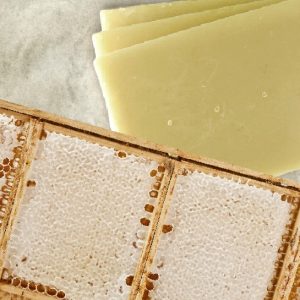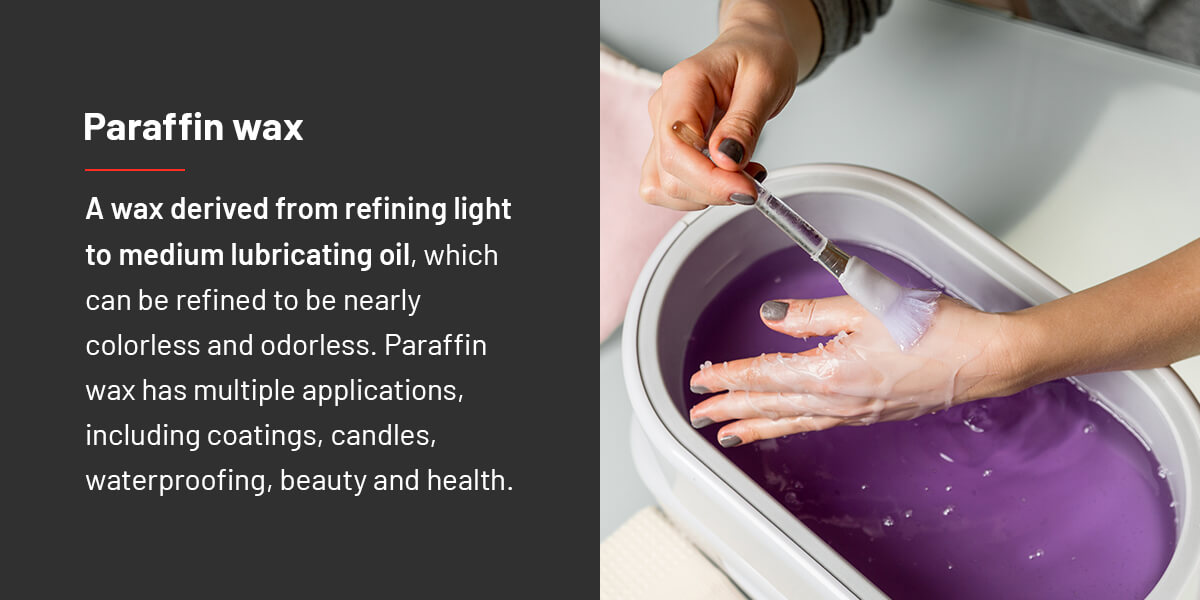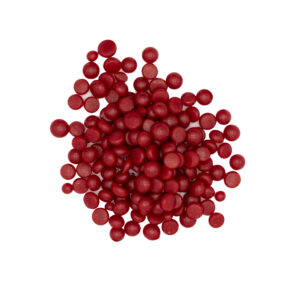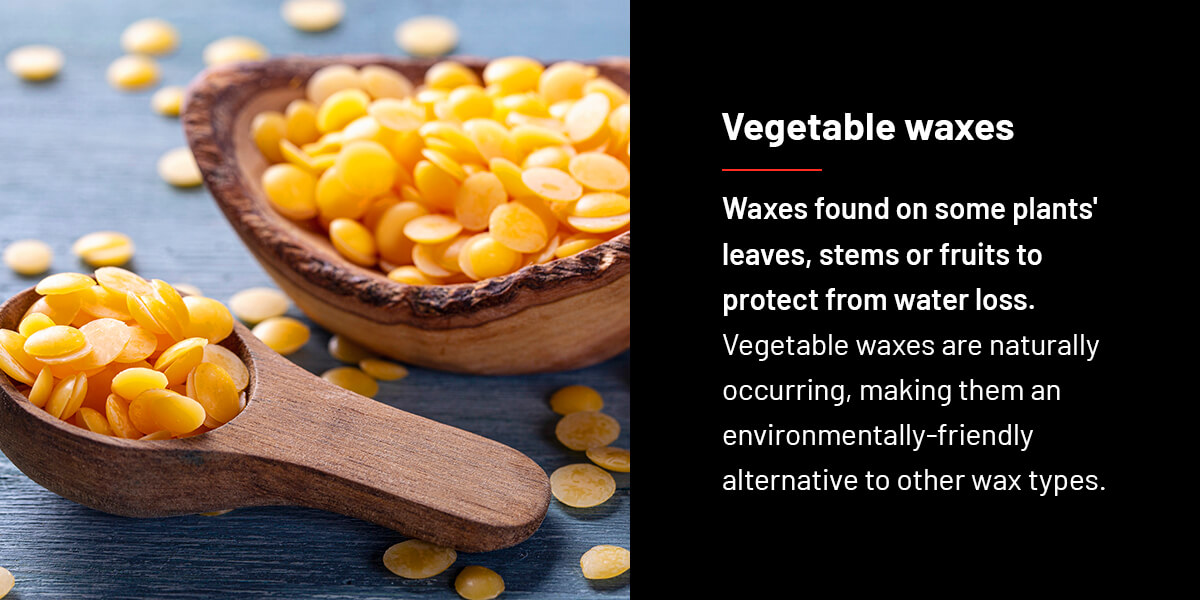Commonly Used Wax Terms

There are numerous terms in the wax industry and keeping track of them can be challenging. A wax glossary can help you track terms you might encounter when buying wax or getting involved in the industry. Below are some wax definitions to help you be more informed as you traverse the industry.
Some commonly used wax terms you can find used within the waxing industry include:
Animal Wax
Animal Wax comes from secretions of both animals and insects. Some of the more common animal waxes include tallow, ambergris, beeswax, and lanolin.
Beeswax
Natural wax secreted by bees when they construct their honeycombs. Beeswax is used in food, beauty products, candles, crayons, furniture polish, lubricant and more.

Candelilla wax
Wax derived from Candelilla shrub leaves. These shrubs form clusters of wax-covered stems, which are typically harvested to extract the thick wax coating. Candelilla wax is often yellowish or brown and has various applications, including beauty products, cardboard coating, dyes and paints.
Carnauba wax
Wax from on the lower surfaces of Carnauba palm leaves. Adding carnauba wax hardens other waxes and raises their melting points. You can also use it in polishes, furniture, beauty products and chewing gum.
Congealing point
The property of wax measuring the temperature where wax starts to “set” as it gets closer to its solid state. Understanding the congealing point of wax lets you use or store liquid wax without it hardening before it’s ready.
Cottonseed wax
Wax made from hydrogenated cottonseed oil. Cottonseed wax’s high flavor stability makes it common in food products and oils. Cottonseed wax can also coat or fortify food products.
Crude wax
Unrefined mixture that still contains a high percentage of oil. You can use crude wax for the manufacture of scale wax and paraffin wax, which can be used as a coating or lubricant for various products.
Formats
The physical forms in which bulk wax is processed for packaging, including pastilles, slabs or liquid bulk. You can choose from different bulk wax blends to meet your packaging needs.
Hydrogenated triglyceride, Tallow
Hydrogenated triglyceride or tallow refers to the waxy solids created from animal fats and oils through the hydrogenation process.
Hydrogenation is a chemical reaction performed with hydrogen, which can help remove impurities and convert substances into waxes.
Tallow is traditionally used in cooking, soap and candles, but you can also use tallow as a lubricant for engineering. Tallow has also been used more recently as fuel for industrial applications.
Laminating
The process of using wax to bond substrates, such as foil to paper or paper to paper.

Melting point, Melt points
The temperature when wax becomes a liquid. Paying attention to the melting point is essential to ensure stored wax doesn’t start to melt before it’s ready for use.
Microcrystalline wax
Microcrystalline wax is created using refined heavy distillates commonly found in lubricating oils. This wax includes complex hydrocarbons and finer crystalline structures. Microcrystalline wax is often used in coatings, lamination, polishes, adhesives and sealing compositions.
Check Out Our Microcrystalline Wax
Mineral wax
A waxlike mineral resin that is a mixture of hydrocarbons found in connection with certain rock salt deposits, coal or petroleum. Examples of mineral waxes include montan, ozocerite and peat waxes. Mineral waxes are often used in personal care products and packaging.
Natural wax
Waxes derived from naturally occurring organisms, such as plants, insects and animals. Examples of natural wax include soy wax, candelilla wax, tallow wax, beeswax and carnauba wax.
Needle penetration
A test performed to measure the physical hardness of wax. Paraffin waxes can vary in hardness. The hardness of paraffin wax may have a significant effect upon other physical properties. The lower the number, the harder the wax. A higher number will mean the wax is softer.
Palm wax
Wax derived from hydrogenating palm oil. Palm waxes have various applications, including creating shiny finishes on floors, vehicles and instruments. Palm waxes are also commonly used in the beauty industry.

Paraffin wax
A wax derived from refining light to medium lubricating oil, which can be refined to be nearly colorless and odorless. Paraffin wax has multiple applications, including coatings, candles, waterproofing, beauty and health.
Pastilles
Formation of small wax beads. Pastilles are ideal for blending, handling, storing and further processing wax.

Petrolatum
Heavy lubricating oil creates a waxy byproduct called petrolatum, which can be filtered and blended to obtain petroleum jelly. The properties of petrolatum include a partially solid mixture of hydrocarbons. However, the composition can vary based on their source, refining process and blend when creating a final product.
Petroleum wax
Petroleum waxes are carbon-based, derived from decomposed or fossilized organic matter. These waxes are separated from lubricating oil by vacuum distillation. Some petroleum waxes include petrolatum, microcrystalline and paraffin. These waxes can be used as electrical insulators, candles, wax papers, cosmetics and polishes.
Rapeseed wax
Rapeseed wax is derived from the partial hardening and hydrogenation of rapeseed oils. Rapeseed wax is ideal as a neutral base for dyes and pigments and can also soften other vegetable waxes.
Roll-on or dry waxing
Dry waxing refers to rolling wax onto a sheet of paper using rollers. Dry waxing can make the paper more durable and resistant to moisture, which is ideal for storing or presenting food products.
Slab
Wax slabs are rectangular sheets of bulk wax. You can purchase slabs of wax to obtain significant amounts for your applications.
Slack wax
Slack wax is an unrefined version of crude wax with a high percentage of oil. Slack waxes can be used as a lubricant in industrial applications, rust protection and moisture barriers.
Soy wax
Partially hydrogenated soybean oil. Soy wax is a type of vegetable wax that can be used in candles and coatings. Soy wax is also more environmentally friendly than other waxes since it’s made from renewable materials.
Synthetic wax
Manmade wax composed of natural gas or ethylene. Synthetic waxes can be used as a stabilizing or binding agent in many products and can improve textures.

Vegetable waxes
Waxes found on some plants’ leaves, stems or fruits to protect from water loss. Vegetable waxes are naturally occurring, making them an environmentally-friendly alternative to other wax types.
Viscosity
Measure of a liquid wax’s resistance to flow. Viscosity helps determine a product’s applications.
Find Wax Products at Blended Waxes
Blended Waxes offers blended, produce and packaging waxes to meet the needs of your finished product. We can create custom blends to fit your exact needs and provide in-house blending so you can focus on the end product. Contact us today to learn more about our custom wax blending services.

